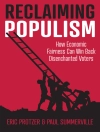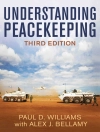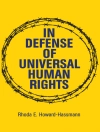This book examines how fashion intersects with political expression in the United States and across the globe. The chapters cover a diversity of perspectives, including experiences of men, minoritized people and women, and LGBTQ persons, as well as examining strategic choices by political actors ranging from dictators to elected officials and from protesters to mothers. Perhaps more importantly, this handbook allows chapters written about the US by mainly US-based academics to be in dialogue with scholarship about other regions of the world largely written by non-US and non-European scholars. Several chapters address regions of the world often understudied by political scientists, including Africa (Kenya, Ethiopia, Uganda, Sudan, Liberia, Nigeria, and Cameroon); Asia (North Korea, Turkmenistan, Indonesia, and Pakistan); and Latin America (Argentina and Mexico). This work goes beyond the usual analyses that cast clothing choices as trivial or constraining and shows how political actors from dictators to elected officials and from citizen activists to social movement leaders incorporate strategic choices about their clothing – ranging from uniforms and business attire to hijab and traditional ethnic attire – in order to advance their political agendas.
Table des matières
.- Chapter I: Introduction.
.- Chapter 2: Introduction to Section 1.
.- Chapter 3: Performing ‘dress’ on political campaign trails.
.- Chapter 4: The Dictator Wears New Clothes: The Use of Fashion in Autocracies.
.- Chapter 5: Merkel’s Non-Fashion.
.- Chapter 6: Do Women Politicians from the Left and Right Use Fashion Differently? The Case of Spain.
.- Chapter 7: Dressing for Political Battle: Dress Codes and State Legislatures.
.- Chapter 8: Freedom, Fashion or Both? A Comparative Study of the Veil and News Coverage of Muslim Political Candidates.
.- Chapter 9: Who Wears the Pants? The Fashion Politics of Female Representation in Congress.
.- Chapter 10: Looks on Trial and the Double Bind Among Female Supreme Court Justices.
.- Chapter 11: Cute but So Much More: How Michelle Obama Used Fashion to Advance Her Political Agenda.
.- Chapter 12: First Ladies and the Politicization of Fashion.
.- Chapter 13: Conclusion to Section 1.
.- Chapter 14: Introduction to Section 2.
.- Chapter 15: Symbolic Politics: (Ad)Dressing Threat and Reassurance.
.- Chapter 16: Sizeable Burdens: How Expectations of Dress Impact Larger Political Candidates.
.- Chapter 17: You Can’t Make This Up: The Intersectional Impact of Cosmetics Use on Candidate Evaluation.
.- Chapter 18: By the Looks of Her She is Not Credible.
.- Chapter 19 Eh, eh, eh my Lord, Looking Dapper:’ Rebranding Speakership and Women’s Political Leadership in Uganda.
.- Chapter 20: Traditional Dress and Political Statement: A Case Study of Indonesia’s First Female Speaker.
.- Chapter 21: Conclusion.
.- Chapter 22: Introduction.
.- Chapter 23 Women in Politics and Virtue-Signaling Fashion in Pakistan.
.- Chapter 24: Sudan and the Struggle for the Liberation of the Dress Code: A Comparative Analysis Between the Islamic Rule and the December 2018 Revolution.
.- Chapter 25: The Impact of Maternal Political Dress on Women’s Political Participation and Influence Domestically and Internationally among Peace Activists and Political Officeholders.
.- Chapter 26: The Political Importance of Fraternal Fashion.
.- Chapter 27 Tactical is the New Black: Examining Gun Owner Fashion as Political Expression.
.- Chapter 28: Flying the Coup: American Flag Apparel and the Memory of the January 6th Uprising.
.- Chapter 29: Echoes of War: Dress as Symbolic Aggression.
.- Chapter 30: Conclusion.
.- Chapter 31: Introduction.
.- Chapter 32: Activism through Fashion: State Repression and the Politics of Fashion in Biafra Southeast Nigeria.
.- Chapter 33: Women Political Agency and Protest Fashion in Nigeria.
.- Chapter 34: Ethnic Dress as Feminist Self-branding: Frida Kahlo’s ‘Tehuana’ Attire.
.- Chapter 35: Capitalizing Hijab in the Midst of Indonesia’s Emerging Middle-class Economy: Relevance to Women’s Empowerment in the Period of Post-reform.
.- Chapter 36: From Cover to Uncover: A History of Women’s and Girls’ Fashion in Cameroon.
.- Chapter 37: Sartorial Style and the Politics of the New Negro Woman of the 1920s and 1930s.
.- Chapter 38: (White) Boys in White dresses: Appropriate Fashion Practices as Racial Capitalist Project.
.- Chapter 39: Querying Radically-Queer Political Fashion.
.- Chapter 40: This Outfit is Political: Situating Slow Fashion as Political Practice.
.- Chapter 41: Conclusion.
.- Chapter 42: Conclusion.
A propos de l’auteur
Karen M. Kedrowski is Director of the Carrie Chapman Catt Center for Women and Politics and Professor of Political Science at Iowa State University, USA. She is the author or coauthor of four books and numerous journal articles and book chapters. Her research focuses on women in US politics and civic engagement.
Candice D. Ortbals is Professor of Political Science at Abilene Christian University, USA. She has co-authored two books about terrorism.
Lori Poloni-Staudinger is Dean of the College of Social and Behavioral Sciences and Professor in The School of Government and Public Policy at University of Arizona, USA. The author of five books and dozens of articles, Poloni-Staudinger work focuses on gender and political violence, women and politics and social movements.
J. Cherie Strachan is Director of the Ray C. Bliss Institute of Applied Politics, The University of Akron, USA. Her recent work explores the #Me Too movement and women’s political ambition, as well as the effects of partisan polarization, rudeness, and civility on political engagement.












